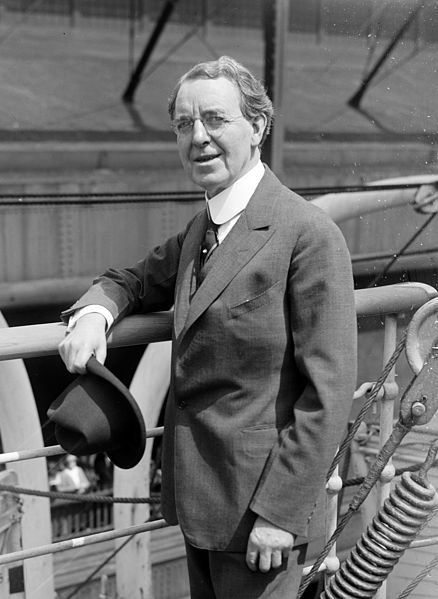<Back to Index>
- Educator and Inventor John Robert Gregg, 1867
- Composer Charles François Gounod, 1818
- Generaloberst of the German Army Heinz Wilhelm Guderian, 1888
PAGE SPONSOR

John Robert Gregg (b. 17 June 1867, Shantonagh, Monaghan, Ireland – d. 23 February 1948, New York City, New York) was an educator, publisher, humanitarian, and the inventor of the eponymous shorthand system Gregg Shorthand.
John Robert Gregg was born in Shantonagh, Ireland, as the youngest child of Robert and Margaret Gregg, where they remained until 1872, when they moved to Rockcorry, County Monaghan. Robert Gregg, who was of Scottish ancestry, was station - master at the Bushford railway station in Rockcorry. He and his wife raised their children as strict Presbyterians, and sent their children to the village school in Rockcorry, which John Robert Gregg joined in 1872. On his second day of class, John Robert was caught whispering to a schoolmate, which prompted the schoolmaster to hit the two children's heads together. This incident profoundly damaged Gregg's hearing for the rest of his life, rendering him unable to participate fully in school, unable to understand his teacher. This ultimately led to John Robert being perceived as dull or mentally challenged by his peers, teachers, and family.
In 1877, one of Robert Gregg's friends, a journalist named Annesley, visited the village for a weekend. He was versed in Pitman Shorthand, and took verbatim notes of the sermon at the village church, causing the preacher to sweat and studder, out of fear that his sermon, which he had plagiarized from a famous preacher, would be made public through Annesley's notes. That day, Robert Gregg saw the shorthand skill as a powerful asset, so he made it mandatory for his children to learn Pitman shorthand, with the exception of John, who was considered by his family too "simple" to learn it. None of the children succeeded in fully learning the system. On his own, John Robert learned a different shorthand system, that of Samuel Taylor, published in a small book by Odell. He taught himself the system fully, since he did not require the ability to hear in order to learn from the book.
Due to hardships on the family, Gregg had to leave school before the age of 13 in order to support his family's income. He worked in a law office, earning five shillings a week.
Gregg initially set out to improve the English adaptation by John Matthew Sloan of the French Duployé Shorthand, while working with one of Sloan's sales agents, Thomas Malone. Gregg and Malone developed a system called Script Phonography, of which Malone took sole possession. Angered by Malone, Gregg resigned from working with him and, encouraged by his older brother Samuel, published and copyrighted his own system of shorthand in 1888. It was put forth in a brochure entitled Light - Line Phonography: The Phonetic Handwriting which he published in Liverpool, England.
In 1893, he emigrated to the United States, where he published in the same year Gregg Shorthand. The method met with great success in the new country, and Gregg settled in Chicago where he authored numerous books for the Gregg Publishing Company on the subjects of shorthand and contemporary business practices.